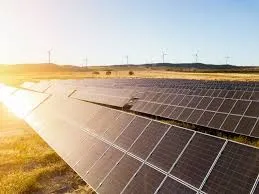10kw inverter single phase
Understanding the 10 kW Single Phase Inverter An Essential Component for Home Solar Power Systems
In recent years, the demand for renewable energy sources, particularly solar power, has surged. As more homeowners seek to harness this clean energy, the importance of efficient inverter technology becomes apparent. Among the various options available, the 10 kW single phase inverter stands out as a popular choice for many residential solar power systems. This article will explore the features, benefits, and considerations of using a 10 kW single phase inverter in your home solar setup.
What is a 10 kW Single Phase Inverter?
An inverter is a crucial component in a solar energy system, responsible for converting the direct current (DC) electricity generated by solar panels into alternating current (AC) electricity, which is used by the appliances in our homes. A 10 kW single phase inverter is designed to handle a maximum output of 10 kilowatts, making it suitable for residential installations requiring a moderate amount of energy.
Single phase inverters are typically utilized in homes since most residential electrical systems operate on single-phase power. This makes the installation simpler and often more cost-effective compared to three-phase systems, which may be more suited for larger commercial operations.
Key Features of 10 kW Single Phase Inverters
1. Efficiency Modern 10 kW single phase inverters are designed with high efficiency ratings, often above 95%. This means that a greater percentage of the DC electricity generated by the solar panels is converted into usable AC electricity, minimizing energy loss.
2. Grid-Tie Capability Many 10 kW inverters are grid-tied, allowing excess electricity generated during peak sunlight hours to be fed back into the utility grid. Homeowners can often earn credits or incentives for this surplus energy through net metering programs.
3. Monitoring and Connectivity Many inverters come equipped with monitoring systems that allow homeowners to track their solar energy production and consumption. This feature can be accessed via smartphone applications or web-based portals, offering insights into energy usage patterns and system performance.
4. Durability and Warranty Quality inverters are built to withstand various environmental conditions, ranging from temperature fluctuations to humidity. Most manufacturers offer warranties ranging from 5 to 10 years, ensuring long-term performance and peace of mind.
Benefits of Using a 10 kW Single Phase Inverter
1. Cost-Effective Solution A 10 kW inverter is often more affordable than a larger capacity inverter. For medium-sized households, this size provides ample power to meet daily energy demands without unnecessary expenditure.
10kw inverter single phase

2. Sufficient Power Supply A 10 kW inverter can adequately support most households, especially those with moderate energy consumption. It can power essential appliances, including refrigerators, air conditioners, and heating systems.
3. Installation Versatility These inverters are relatively easy to install and require less complex wiring compared to three-phase inverters. This can result in lower installation costs and shorter setup times.
4. Support for Residential Needs As many homes begin to incorporate additional energy-consuming devices, a 10 kW inverter provides a flexible solution that can grow with the household's power needs.
Considerations When Choosing a 10 kW Single Phase Inverter
While a 10 kW single phase inverter presents many advantages, several factors should be considered before making a purchase
1. Energy Consumption Assessment Homeowners should evaluate their energy consumption patterns to determine whether a 10 kW inverter provides sufficient power for their needs. This involves analyzing existing utility bills and considering future energy requirements.
2. Compatibility with Solar Panels Ensure that the inverter is compatible with the solar panels being used. The inverter must support the voltage and current specifications of the solar array to function effectively.
3. Local Regulations Before installing a solar system, it is essential to check with local regulations and utilities to understand any requirements or restrictions that may apply to grid-tied solar systems.
4. Warranty and Customer Support Selecting an inverter from a reputable manufacturer with extensive warranty options can safeguard your investment and ensure reliable customer service in case of malfunctions.
Conclusion
The 10 kW single phase inverter is a vital element in modern residential solar power systems, providing an efficient and effective means to convert solar energy into usable electricity. As homeowners increasingly prioritize renewable energy solutions, understanding the features and benefits of such inverters will allow them to make informed decisions about their solar investments. With the right considerations, a 10 kW single phase inverter can significantly enhance energy independence and contribute positively to a sustainable future.
-
Unlocking Energy Freedom with the Off Grid Solar InverterNewsJun.06,2025
-
Unlock More Solar Power with a High-Efficiency Bifacial Solar PanelNewsJun.06,2025
-
Power Your Future with High-Efficiency Monocrystalline Solar PanelsNewsJun.06,2025
-
Next-Gen Solar Power Starts with Micro Solar InvertersNewsJun.06,2025
-
Harnessing Peak Efficiency with the On Grid Solar InverterNewsJun.06,2025
-
Discover Unmatched Efficiency with the Latest String Solar InverterNewsJun.06,2025







